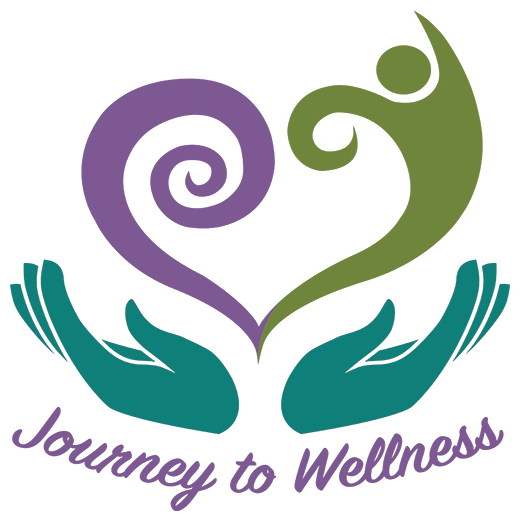Massage Cupping
What is Massage Cupping?
Cupping is a therapy used in traditional Chinese medicine (TCM) to remove stagnation and stimulate the flow of qi (chi), the flow of vital energy circulating through the body and the world around us. If the qi is disrupted or disturbed, it can create stagnation (blockages) or imbalances in the body. Traditionally cupping therapy is applied using a glass fire-heated cup by a licensed acupuncturist. However, today, vacuum pump cups made of hard plastic or silicone have proven to be effective and beneficial when incorporated into a massage therapy session. These cups are often placed on the back, neck, and shoulders or other site of pain. At Journey to Wellness, Inc massage cupping can done be done as a stand-alone treatment or may be incorporated into your table massage session depending on how much time you have available and your session goals.
To learn about rates for therapeutic massage services with cupping massage, see massage rates or massage packages.
What Can I Expect with Massage Cupping?
When cups are applied the suction will feel tight at first, but should not feel painful. That sensation passes quickly as your therapist moves on to place the next cup. After placing each cup on your back, shoulder, or other area of pain your therapist will repeat the suction process. At Journey to Wellness, Inc. cups are often moved around or can be left stationary (usually for 20 minutes or less) as part of the session. Your therapist will always check to make sure you’re still comfortable.
Cupping may cause temporary marks on the skin as a result of blood being pulled into that area from the degree of suction created by the vacuum and the level of internal stagnation. In TCM it is thought that the darker the mark, the more stagnation was dredged up during treatment. This would be considered a favorable outcome, suggesting the treatment has successfully removed stagnation. The marks (if any occur) may last anywhere from a few hours to several days. The more often you receive cupping for the same issue, the lighter the marks will be each time. Other post-cupping effects may include general soreness, fatigue, or flu-like symptoms the next day. These are all normal responses to Massage Cupping. Post-session it is important that you take it easy and practice good self-care. Stay hydrated, avoid alcohol, keep the areas cupped covered, and do not shower immediately after treatment.
Should I Receive Massage Cupping?
Cupping improves overall health by removing the energy blockages that TCM practitioners identify as barriers to the flow of healthy energy or qi. Cupping can be beneficial for local pain relief, muscle relaxation, and increasing blood flow. Research on the benefits of cupping can be found below.
This therapy is never used as a first course of treatment at Journey to Wellness, Inc. unless the patient has had prior experience with Massage Cupping. It is usually best to discuss adding this into a treatment session if you have reached a plateau in care or have a specific condition that might respond well to this therapy.
Cupping should NEVER be applied over the following areas or in the following conditions:
Over varicose veins
Over skin lesions or inflammation
Over orifices, or eyes
On oncology patients
On patients in organ failure - Renal, hepatic or cardiac
On patients with a pacemaker
On patients with hemophilia or similar bleeding disorder
Caution should be used in these cupping circumstances:
Over arteries, veins and nerves.
On patients with acute infections
On patients using anticoagulants - aspirin, warfarin, etc
On patients with severe chronic disease (like heart disease)
On patients that are pregnant, during puerperium or menstruating
On patients who are anemic
On patients who have recently given blood or undergone recent medical procedures
Massage Cupping Research:
Piyush Mehtaa and Vividha Dhapteb. Cupping therapy: A prudent remedy for a plethora of medical ailments. J Tradit Complement Med. 2015 Jul; 5(3): 127–134.
Huijuan Cao, Xun Li, Jianping Liu. An Updated Review of the Efficacy of Cupping Therapy. PLoS ONE 2012; 7(2): e31793.
Jong-In Kim, Myeong Soo Lee, Dong-Hyo Lee, Kate Boddy, and Edzard Ernst. Cupping for Treating Pain: A Systematic Review. Evidence Based Complementary and Alternative Medicine. 2011.
Myeong Soo Lee,Tae-Young Choi,Byung-Cheul Shin,Jong-In Kim &Sang-Soo Nam. Cupping for Hypertension: A Systematic Review. Journal of Clinical and Experimental Hypertension. 2010.; 32(7): 423-425.
Myeong Soo Lee, Tae-Young Choi, Byung-Cheul Shin, Chang-ho Han, Edzard Ernst. Cupping for stroke rehabilitation: A systematic review. Journal of Neurological Sciences. July 15 2010; 294(1-2):70-73.
HONG Yongfeng, WU Jianxian, WANG Bin, et al. The effect of moving cupping therapy on nonspecific low back pain. Chinese Journal of Rehabilitation Medicine. April 2006.


